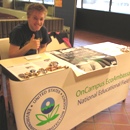Navigation
US EPA Launches Green Products Web Portal for Pollution Prevention Week
The EPA is observing Pollution Prevention (P2) Week, September 19-25, 2011, by launching a new tool designed to provide Americans easy access to information about everyday products like home appliances, electronics and cleaning products that can save money, prevent pollution and protect people’s health.
|
The U.S. Environmental Protection Agency (EPA) is observing Pollution Prevention (P2) Week, September 19-25, 2011, by launching a new tool designed to provide Americans easy access to information about everyday products like home appliances, electronics and cleaning products that can save money, prevent pollution and protect people’s health. The new green products web portal is available at www.epa.gov/greenerproducts.
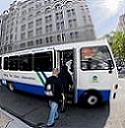 |
This week serves to recognize significant pollution prevention work around the country and help consumers get involved in pollution prevention. EPA’s new green products web portal is an easy way for all Americans to learn about products that prevent pollution and protect our environment.
 |
| How can I find safer products for my family and the planet? |
Using the new tool, consumers can find electronics and appliances that have earned EPA’s Energy Star label and can browse WaterSense products that help save energy and water.
Additionally, consumers can find information about cleaning products that are safer for the environment and people’s health. These products bear the EPA Design for the Environment (DfE) label. The website will also help manufacturers and institutional purchasers with information on standards and criteria for designing greener products.
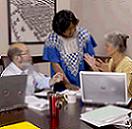 |
| Energy Efficiency and Pollution Reduction at work and on the road: Commute smarter, green your building, reduce waste and lower costs. Exampoles are available at http://www.epa.gov/p2week/atwork.html. |
“By purchasing greener products, consumers can help reduce air pollution, conserve water and energy, minimize waste and protect their children and families from exposure to toxic chemicals, while also creating green jobs,” said Steve Owens, assistant administrator of EPA’s Office of Chemical Safety and Pollution Prevention, “Pollution Prevention is good for our health, our environment and our economy.”
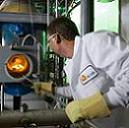 |
| Increase energy efficiency, increase profits and eliminate wastes. Case studies for industry are available along with information about Green Engineering, Green Suppliers, and success stories. The Southwest Network for Zero Waste Pollution Prevention case study database. Currently there are 498. Each case study is an example of how a real facility saved money, reduced waste, and/or lowered their regulatory burden through an innovative P2 practice. The studies are often written in a companies own words, with minimal editing at http://www.epa.gov/p2week/industry.html. |
Join the EPA in marking P2 Week this week, and help prevent pollution every day.
Pollution prevention (P2) is reducing or eliminating waste at the source by modifying production processes, promoting the use of non-toxic or less-toxic substances, implementing conservation techniques, and re-using materials rather than putting them into the waste stream.
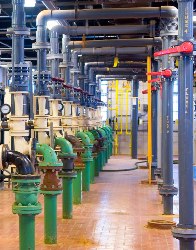 |
| All sectors of industry benefit from the application of pollution prevention principles and have increased profits and decreased waste time and again. |
Since pollution prevention is a key policy in national environmental protection activities EPA has developed a 2010-2014 Pollution Prevention Program Strategic Plan. A number of Partnership Programs and other EPA initiatives utilize pollution prevention approaches in their work. Basic information about pollution prevention.
More information on pollution prevention, P2 Week, and EPA’s P2 programs is available at http://epa.gov/p2/ and many related resources from the US EPA are listed below.
Text and images are from the U.S. Environmental Protection Agency (EPA), 20 September 2011.
Additional US EPA resources:
Where You Live - Local and Regional contacts for information and assistance with pollution prevention.
Grants and Funding - Provides information on matching funds to state and tribal programs to support P2 activities across all environmental media and to develop state programs.
Laws and Policies - A short explanation with links to more information on the Pollution Prevention Act of 1990 and subsequent policies.
Partnerships - EPA's efforts to promote sustainable business practices, cleaner technologies and processes and safe products through voluntary partnerships.
Technical Assistance - Services, case studies and technical assistance to help businesses and state agencies enhance their pollution prevention programs.
Tools - Databases, case studies, measuring results, and online calculators.
Publications - Sources for factsheets, case studies, documents, pamphlets and posters on P2. You may request documents from the Pollution Prevention Information Clearinghouse (PPIC).
EPA’s Quick Finder:
E3: Economy, Energy and Environment
More Pollution Prevention Week News from the US EPA:
EPA launches Greener Products Portal during P2 week. EPA's new green products web portal is an easy way for all Americans to learn about products that prevent pollution and protect our environment.
Federal Electronic Challenge 2011 Winners EPA and Office of the Federal Environmental Executive are recognizing organizations and individuals for their leadership. Electronic stewardship actions undertaken by these partners have saved $10 million, purchased 54,000 green electronics registered with EPEAT® and reused, donated or recycled over 68,000 pieces of office electronics.
E3: Economy, Energy and the Environment and The Green Suppliers Network (GSN) in FY 2010 prevented 92 million pounds of hazardous waste, and reduced the use of 40 million gallons of water, and the use of 2,568 BBtu's of energy. In addition the program helped save manufacturers over $11 million dollars.
EPA Unleashing Green Chemistry and Engineering In Service of a Sustainable Future On Friday, September 23, 2011, EPA Region 2 and EPA's Office of Research and Development are presenting a one-day workshop. This event is designed to highlight and encourage green chemistry/engineering innovations, investments, applications and policies which can lead to improved human health and the environment and a more sustainable economy. Presenters at the event will include nationally recognized technical experts and champions in green chemistry and engineering.
EPA's Design for the Environment's (DfE) Safer Product Labeling Program has recognized 2500 products that are safer for people and the planet. Learn more about DfE (Video).
Nominations for the 2012 Presidential Green Chemistry Awards. EPA is accepting nominations until December 31, 2011. View the 16th Annual Presidential Green Chemistry Challenge Awards Program video (text version).
EPA's Green Engineering program has identified a large but generally hidden footprint that can be greatly reduced by extending the life of once used solvents. Read about the re-manufacturing or green engineering exclusion in the proposed Definition of Solid Waste Rule.
The EPA OnCampus ecoAmbassadors Program allows college students to complete activities that help green their campuses, promote environmental awareness and carry out the EPA's mission. Pollution Prevention (P2) programs - Design for the Environment, EnergyStar and WaterSense- are represented in the activities students can implement. Registration is now open for the 2011-2011 academic year!
Community Action for a Renewed Environment (CARE) Publications
Community Action for a Renewed Environment (CARE) is a competitive grant program that offers an innovative way for a community to organize and take action to reduce toxic pollution in its local environment. Here you will find publications as they relate to the Community for a Renewed Environment (CARE) Program. Additional publications will be added to the list as they become available.
Note: From the US EPA: View all news releases related to pesticides and toxic chemicals
Search
Latest articles
Agriculture
- World Water Week: Healthy ecosystems essential to human health: from coronavirus to malnutrition Online session Wednesday 24 August 17:00-18:20
- World Water Week: Healthy ecosystems essential to human health: from coronavirus to malnutrition Online session Wednesday 24 August 17:00-18:20
Air Pollution
- "Water and Sanitation-Related Diseases and the Changing Environment: Challenges, Interventions, and Preventive Measures" Volume 2 Is Now Available
- Global Innovation Exchange Co-Created by Horizon International, USAID, Bill and Melinda Gates Foundation and Others
Biodiversity
- World Water Week: Healthy ecosystems essential to human health: from coronavirus to malnutrition Online session Wednesday 24 August 17:00-18:20
- Mangrove Action Project Collaborates to Restore and Preserve Mangrove Ecosystems
Desertification
- World Water Week: Healthy ecosystems essential to human health: from coronavirus to malnutrition Online session Wednesday 24 August 17:00-18:20
- UN Food Systems Summit Receives Over 1,200 Ideas to Help Meet Sustainable Development Goals
Endangered Species
- Mangrove Action Project Collaborates to Restore and Preserve Mangrove Ecosystems
- Coral Research in Palau offers a “Glimmer of Hope”
Energy
- Global Innovation Exchange Co-Created by Horizon International, USAID, Bill and Melinda Gates Foundation and Others
- Wildlife Preservation in Southeast Nova Scotia
Exhibits
- Global Innovation Exchange Co-Created by Horizon International, USAID, Bill and Melinda Gates Foundation and Others
- Coral Reefs
Forests
- NASA Satellites Reveal Major Shifts in Global Freshwater Updated June 2020
- Global Innovation Exchange Co-Created by Horizon International, USAID, Bill and Melinda Gates Foundation and Others
Global Climate Change
- World Water Week: Healthy ecosystems essential to human health: from coronavirus to malnutrition Online session Wednesday 24 August 17:00-18:20
- Mangrove Action Project Collaborates to Restore and Preserve Mangrove Ecosystems
Global Health
- World Water Week: Healthy ecosystems essential to human health: from coronavirus to malnutrition Online session Wednesday 24 August 17:00-18:20
- More than 400 schoolgirls, family and teachers rescued from Afghanistan by small coalition
Industry
- "Water and Sanitation-Related Diseases and the Changing Environment: Challenges, Interventions, and Preventive Measures" Volume 2 Is Now Available
- Global Innovation Exchange Co-Created by Horizon International, USAID, Bill and Melinda Gates Foundation and Others
Natural Disaster Relief
- STOP ATTACKS ON HEALTH CARE IN UKRAINE
- Global Innovation Exchange Co-Created by Horizon International, USAID, Bill and Melinda Gates Foundation and Others
News and Special Reports
- World Water Week: Healthy ecosystems essential to human health: from coronavirus to malnutrition Online session Wednesday 24 August 17:00-18:20
- STOP ATTACKS ON HEALTH CARE IN UKRAINE
Oceans, Coral Reefs
- World Water Week: Healthy ecosystems essential to human health: from coronavirus to malnutrition Online session Wednesday 24 August 17:00-18:20
- Mangrove Action Project Collaborates to Restore and Preserve Mangrove Ecosystems
Pollution
- Zakaria Ouedraogo of Burkina Faso Produces Film “Nzoue Fiyen: Water Not Drinkable”
- "Water and Sanitation-Related Diseases and the Changing Environment: Challenges, Interventions, and Preventive Measures" Volume 2 Is Now Available
Population
- "Water and Sanitation-Related Diseases and the Changing Environment: Challenges, Interventions, and Preventive Measures" Volume 2 Is Now Available
- "Water and Sanitation-Related Diseases and the Changing Environment: Challenges, Interventions, and Preventive Measures" Volume 2 Is Now Available
Public Health
- World Water Week: Healthy ecosystems essential to human health: from coronavirus to malnutrition Online session Wednesday 24 August 17:00-18:20
- STOP ATTACKS ON HEALTH CARE IN UKRAINE
Rivers
- World Water Week: Healthy ecosystems essential to human health: from coronavirus to malnutrition Online session Wednesday 24 August 17:00-18:20
- Mangrove Action Project Collaborates to Restore and Preserve Mangrove Ecosystems
Sanitation
- World Water Week: Healthy ecosystems essential to human health: from coronavirus to malnutrition Online session Wednesday 24 August 17:00-18:20
- Promoting the Development of Rural Water Supply and Sanitation -Case from Zhejiang Province, China
Toxic Chemicals
- "Water and Sanitation-Related Diseases and the Changing Environment: Challenges, Interventions, and Preventive Measures" Volume 2 Is Now Available
- Actions to Prevent Polluted Drinking Water in the United States
Transportation
- "Water and Sanitation-Related Diseases and the Changing Environment: Challenges, Interventions, and Preventive Measures" Volume 2 Is Now Available
- Urbanization Provides Opportunities for Transition to a Green Economy, Says New Report
Waste Management
- Promoting the Development of Rural Water Supply and Sanitation -Case from Zhejiang Province, China
- "Water and Sanitation-Related Diseases and the Changing Environment: Challenges, Interventions, and Preventive Measures" Volume 2 Is Now Available
Water
- World Water Week: Healthy ecosystems essential to human health: from coronavirus to malnutrition Online session Wednesday 24 August 17:00-18:20
- UN Food Systems Summit Receives Over 1,200 Ideas to Help Meet Sustainable Development Goals
Water and Sanitation
- World Water Week: Healthy ecosystems essential to human health: from coronavirus to malnutrition Online session Wednesday 24 August 17:00-18:20
- Mangrove Action Project Collaborates to Restore and Preserve Mangrove Ecosystems

